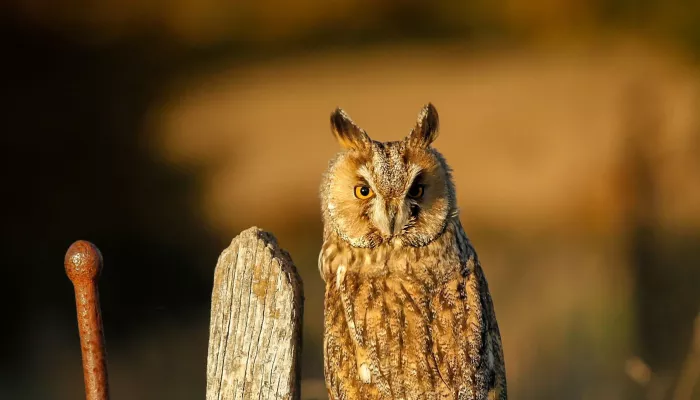About
Long-eared owls are shy, nocturnal birds of coniferous forests, plantations and mixed woodlands and can be seen in communal roosts of more than 20 birds. Small mammals, such as voles, form the majority of the long-eared owl's diet, but small birds are also important. The long-eared owl hunts out its prey by sweeping clearings and fields in a zig-zag flying pattern, scanning the ground for movement. Once prey is spotted, the owl swoops down and dispatches its victim on the ground by biting the back of the head. Long-eared owls breed from February onwards, laying their eggs in old nests or tree hollows.
How to identify
The long-eared owl is mottled brown, with big, orange-red eyes and long wings. Long 'ear tufts' provide its common name. The similar short-eared owl is paler, with yellow eyes and short ear tufts and is usually found near grassland and saltmarshes.
Did you know?
The 'ear' tufts of both long- and short-eared owls are not actually ears at all, but feathers that can be raised when the owl is alarmed, or wants to make itself look bigger.

